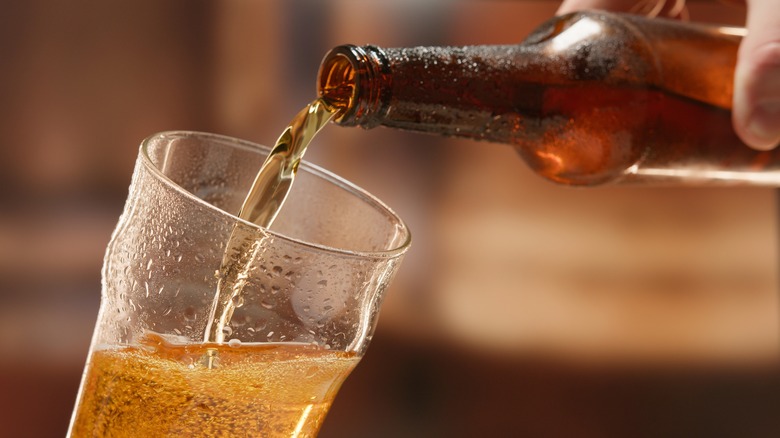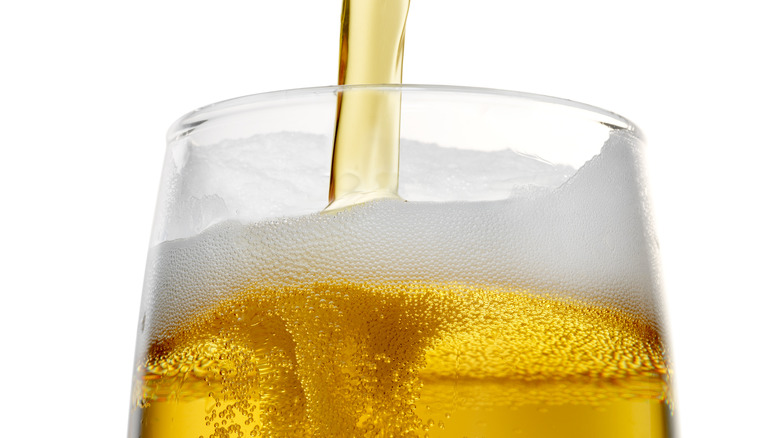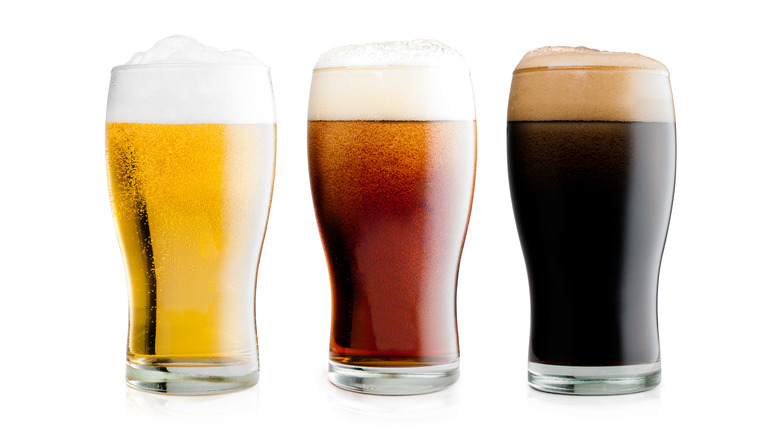Leftover Beer Is The Powerhouse Ingredient Your Baked Goods Need
Sometimes, when it comes to a bold, full-bodied beer, the human body can hit its limits. When you simply can't finish one and have some left over, you may think all you can do is dump it down the drain. Well, before you go lubricating your kitchen plumbing with leftover Budweiser, consider saving it for the next time you fire up the oven! Baking with beer can infuse whatever you're cooking up with a malty, hoppy flavor that only the sudsy stuff can bring, and it's becoming a more common practice within the baking world.
Harnessing the power of beer's carbonation by using it as a baking ingredient assists with leavening whatever you may be whipping up. When used as the primary liquid in a recipe, it gives extra lift and tender texture to things like breads and cakes. Today, you may not have gotten to the bottom of the Guinness you were sipping, but we'll be getting to the bottom of why beer is a handy tool to have around the baking station ... other than getting you tipsy while you bake, of course!
Bubbles boost a bake
One primary reason leftover beer makes such a great addition to your baking routine is the bubbles. After adding beer to your batters, the carbonation dissipates throughout the bake, leaving a light, airy texture to any bread. Once the batter has set, the beer also leaves it with a shimmery, glistening finish, comparable to something like tempura. It will catch eyes, and later, catch eager stomachs! Keeping the beer at room temperature is ideal, as it helps the acidity settle to a manageable degree, before it begins to interact with the regular cast of characters in the baking arena. The warmer the beer, the less foam you'll have to deal with.
Speaking of acidity, that's also the reason it's best to use full fat dairy when combining beer with the other ingredients. The harsh acidity of the beer chemically curdles the dairy it comes in contact with, so using milk or butter with the highest percentage of fat in your respective recipes is highly recommended. Dairy with lower fat content will turn sour more quickly and leave you with a worse tasting final product.
Different beers for different bakes
As most beer aficionados know, there isn't just one single kind of brew. There's a wide spectrum of varieties that run the gamut from light to dark, each with a different flavor profile. When it comes to baking, those darker beers, such as porters and stouts (which may seem similar, but are two distinct kinds), are a fantastic place to start. This is because their natural taste tends to include notes of chocolate or caramel, which as we all know, are often welcome additions to baked goods. Moving down the line, amber and brown ales are also nice to use, due to their relatively low bitterness. Thanks to their subtle, nutty hues, they can help immensely when it comes to cookies and pies, pairing especially well with anything that uses ginger or molasses! Lighter, hoppier brews are the way to go when you're using fruit in your bakes, either artificial or natural. The bolder tartness of an IPA or Pilsner will marry quite pleasurably with the taste of citrus.
Using beer as a liquid ingredient for your baking needs isn't as crazy as it sounds. The next time you go to muscle down those last few sips of warm beer, maybe consider parlaying them into a loaf of spectacular cheddar beer bread instead! That way you can not only save your tastebuds from dregs, but it will delight the tastebuds of those you share your finished bread with! A perfect situation!


